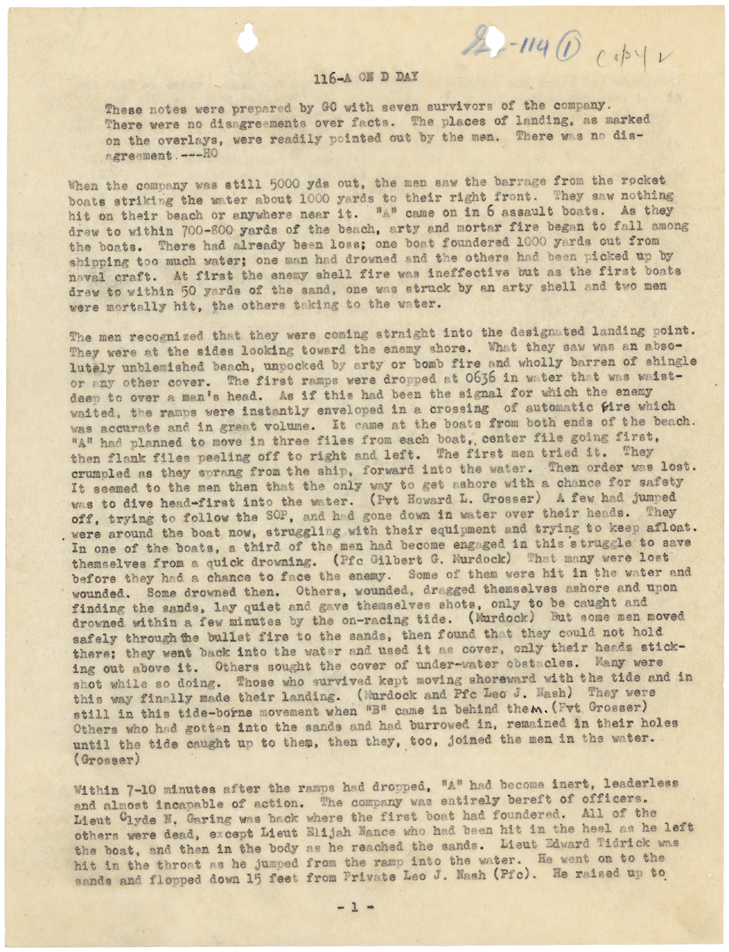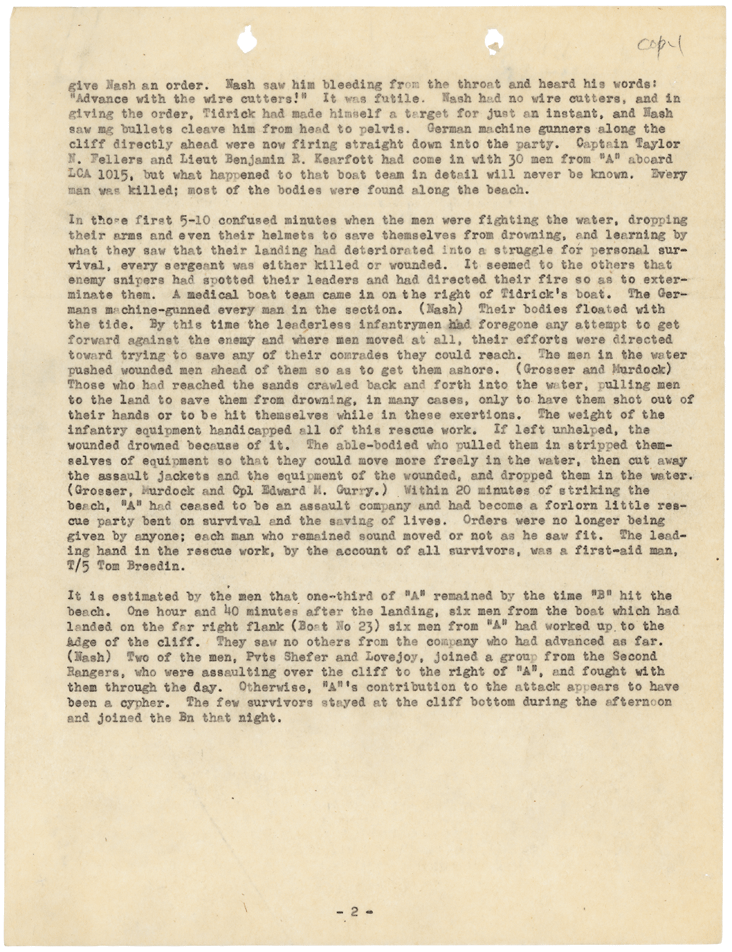"A Forlorn Little Rescue Party": Post-Combat Interviews With D-Day Survivors From One Hard-Hit Company
The Vault is Slate's history blog. Like us on Facebook, follow us on Twitter @slatevault, and find us on Tumblr. Find out more about what this space is all about here.
This testimony, collected soon after D-Day by the U.S. Army Historical Section, compiles memories from seven survivors of Company A, 116th Infantry Regiment, 29th Infantry Division.
Last year, on the anniversary of D-Day, I wrote about a sketch that a combat historian attached to the 29th Division made of a platoon leader’s uniform and kit. The histories that these interviewers collected combined images and documents, like that sketch, with combat interviews like these. The historians, who placed themselves near the action in a vessel designated as an emergency hospital, interviewed some wounded men as early as D-Day itself (PDF).
In its matter-of-fact style, this short narrative gives a real sense of Company A’s experience of combat on D-Day as a rolling series of crises. The survivors remember the threat of automatic fire as soon as the ramps on their assault boats dropped, and the struggle not to succumb to a “quick drowning.” Survival became a matter of negotiating between the water and the enemy fire. The interviewees report that some of their fellow soldiers used the water for cover, while
others, wounded, dragged themselves ashore and upon finding the sands, lay quiet and gave themselves shots [probably self-injections of morphine], only to be caught and drowned within a few minutes by the on-racing tide.
In the case of Company A, the almost immediate loss of their officers compounded their troubles. “It seemed,” the historian writes, “that enemy snipers had spotted their leaders and had directed their fire so as to exterminate them.”
In the end, the company was so diminished that the men who managed to reach the beach joined up with other groups. The experience of the unfortunate group was so scattered as to be inconclusive. “A’s contribution to the attack,” the historian concludes, “appears to have been a cypher.”


